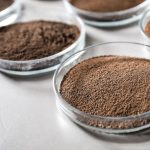SGS Seed and Crop News: March 2020
Seed and Crop eNewsletter: March 2020
In this edition of SGS BioVision News, we will discuss:
- SGS Sherwood Park attains Authorized Exporter Laboratory status for OECD Seed Schemes
- Modified Kelowna test method Commercialized for western Canadian soils
- Manure Analysis prior to Spring Application for Nutrient Credit Calculation
- Ask an Analyst: How do I properly collect and ship soil samples?
SGS SHERWOOD PARK ATTAINS AUTHORIZED EXPORTER STATUS FOR OECD SEED SCHEMES
We are pleased to announce the Canadian Food Inspection Agency has authorized SGS Sherwood Park as an Authorized Exporter Laboratory. What does this mean? We now test seed for certification pursuant to the Organization for Economic Co-Operation and Development (OECD) Seed Schemes for international shipments. Combining this designation, as well as the recent ISTA accreditation for issuance of ISTA Orange (OIC) and Blue (BIC) international certificates, our services now align in the global marketplace. To learn more about both our laboratory services and our ISTA authorized sampler training program, contact us at 1.800.952.5407.
MODIFIED KELOWNA TEST METHOD COMMERCIALIZED FOR WESTERN SOILS
Soil nutrient management planning is built on routine soil laboratory testing, planned yield targets and sustainability. We have expanded our processes for western soils through commercialization of the modified Kelowna test method. Reach out to us at BioVision.SherwoodPark@sgs.com for our Sample Submission form and shipping instructions. We recommend you allocate resources to sampling early this spring, as the weather last fall was unfavorable for sampling.
MANURE ANALYSIS PRIOR TO SPRING APPLICATION FOR NUTRIENT CREDIT CALCULATION
Before spreading manure this spring, it is good management to test your product to allow for a more precise nutrient credit calculation than simply using average manure values. Results can vary widely within a livestock species depending on their diet, bedding, and type of storage. With potentially tens of thousands of dollars in nutrient value in a manure storage tank, it can pay dividends to know how many pounds per acre your product has, per ton or 1000 gallons applied. Questions on manure sample submission can be made to 1.800.265.7175.
ASK AN ANALYST: HOW DO I PROPERLY COLLECT AND SHIP SOIL SAMPLES FOR TESTING?
As with any sampling, it is important to collect a representative sample. This may be a composite across a field, a single point as a bench mark, or a geo-referenced sample taken from a grid pattern or management zone. Cores should then be mixed well together and then reduced in size to submit the final 500 grams (1 pound) to the laboratory.
In western Canada, it is common to take two separate depths, 0 to 6 inches, and a second sample from 6 to 24 inches deep. In Eastern Canada, soils are often much shallower and only a 0 to 6 inch sample is collected.
Most nutrients will not be variable in soil due to collection or packaging practices, however nitrogen can continue to mineralize into nitrate and ammonium forms. It is therefore important for any samples testing nitrogen to be kept cool and shipped as soon as possible.





